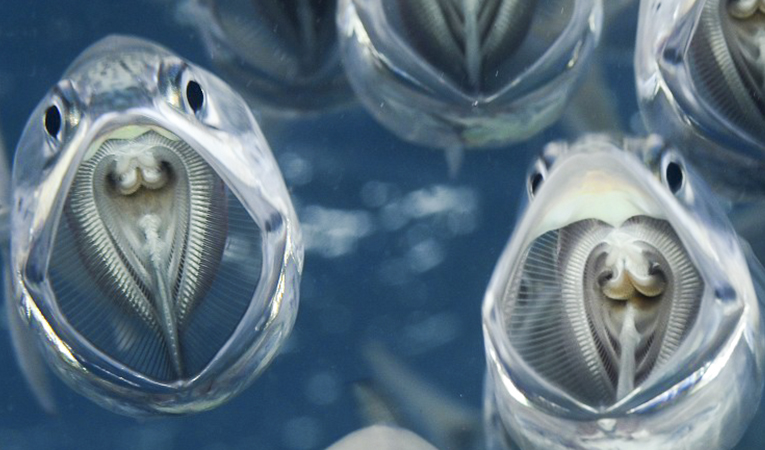If you are taking a bathe in the sea, and suddenly see these piranha-like creatures coming at you, your first thought will be to get out of the water. That is if you can see them at all, because these Indian mackeral are almost completely translucent, appearing as ghostly forms until they get up close.
The Indian mackerel
(Rastrelliger kanagurta) is a species of mackerel in the scombrid family
(family Scombridae) of order Perciformes. The Indian mackerel is found in warm
shallow waters along the coasts of the Indian and Western Pacific oceans. Its
range extends from the Red Sea and East Africa in the west to Indonesia in the
east, and from China and the Ryukyu Islands in the north to Australia,
Melanesia and Samoa in the south. It has also entered the Mediterranean Sea
through the Suez Canal.
The body of the Indian
mackerel is moderately deep, and the head is longer than the body depth. The
maxilla are partly concealed, covered by the lacrimal bone, but extend till
around the hind margin of the eye. These fish have thin dark longitudinal bands
on the upper part of the body, which may be golden on fresh specimens. There is
also a black spot on the body near the lower margin of the pectoral fin. Dorsal
fins are yellowish with black tips, while the caudal and pectoral fins are
yellowish. The remaining fins are dusky. Indian mackerel reach a maximum fork
length of 35 centimetres (14 in), but are generally around 25 centimetres (9.8
in) in length.
The Indian mackerel is generally found in shallow, coastal waters, where the surface water temperature is at least 17 °C (63 °F). Adults of this species are found in coastal bays, harbours and deep lagoons. They are commonly found in turbid waters rich in plankton. Adult Indian mackerel feed on macroplankton including the larvae of shrimp and fish.
Source : http://www.wikiwand.com/en/Indian_mackerel












 All
All
 Politics
Politics
 Economy
Economy
 Tourism
Tourism
 Nature
Nature
 Community
Community

